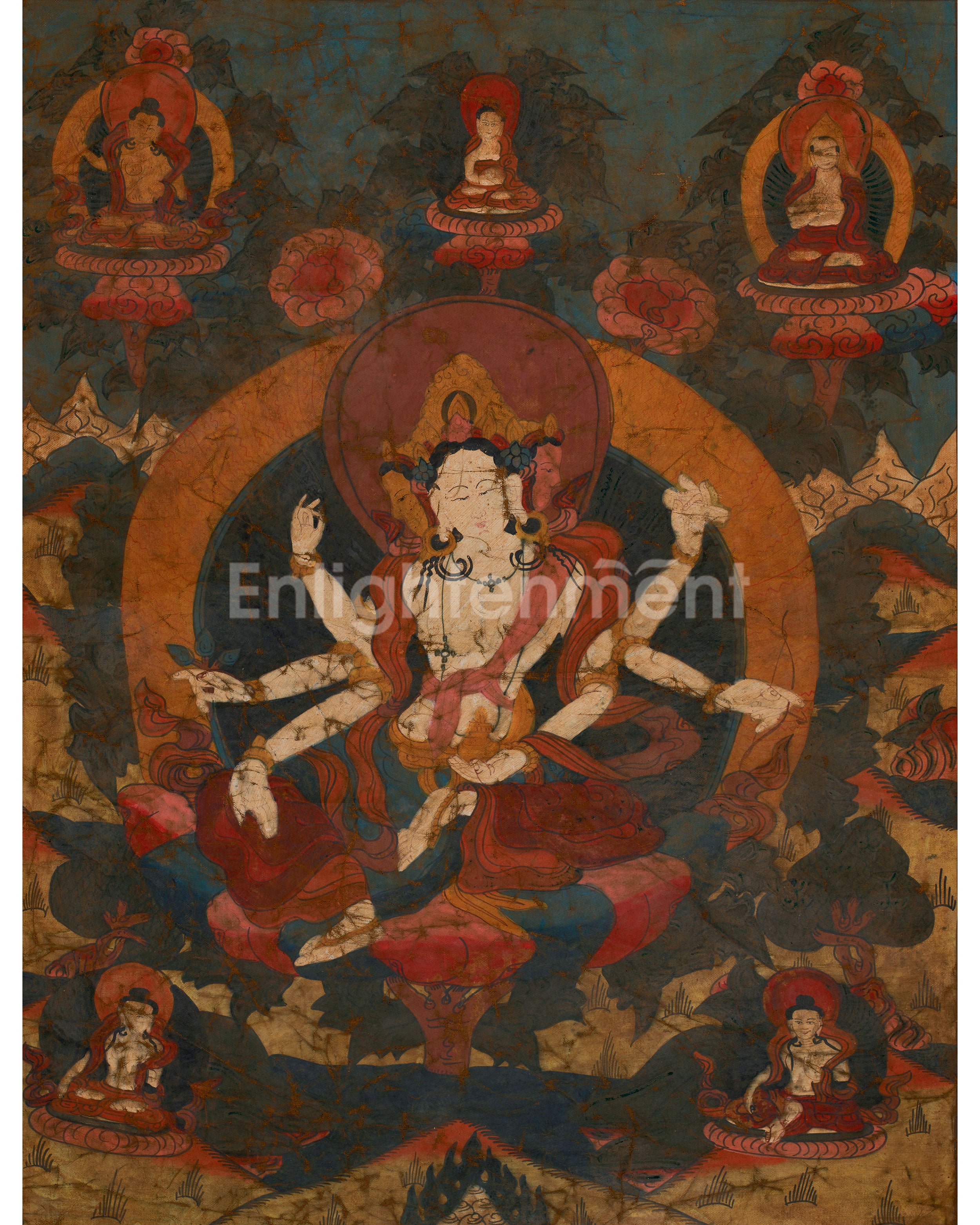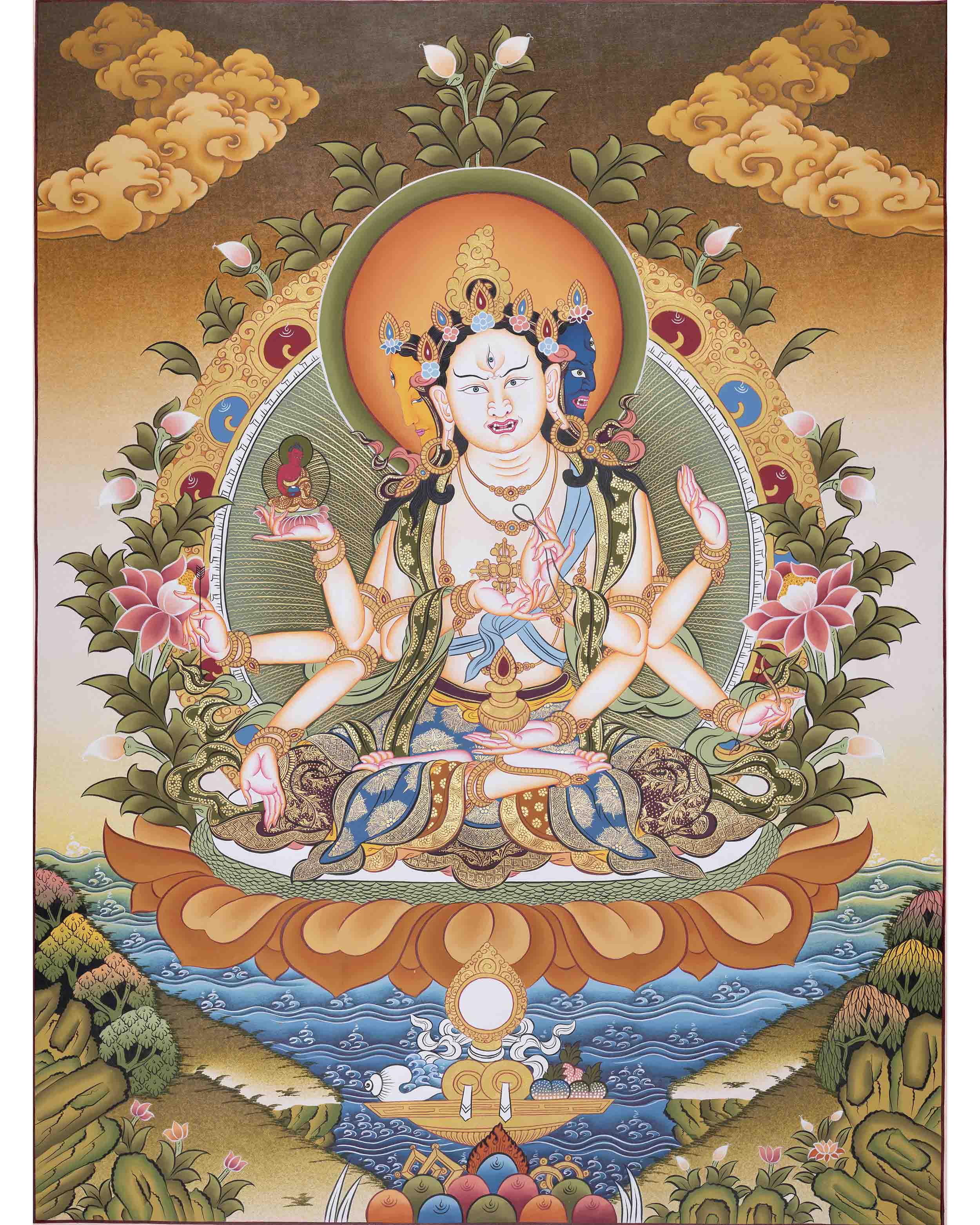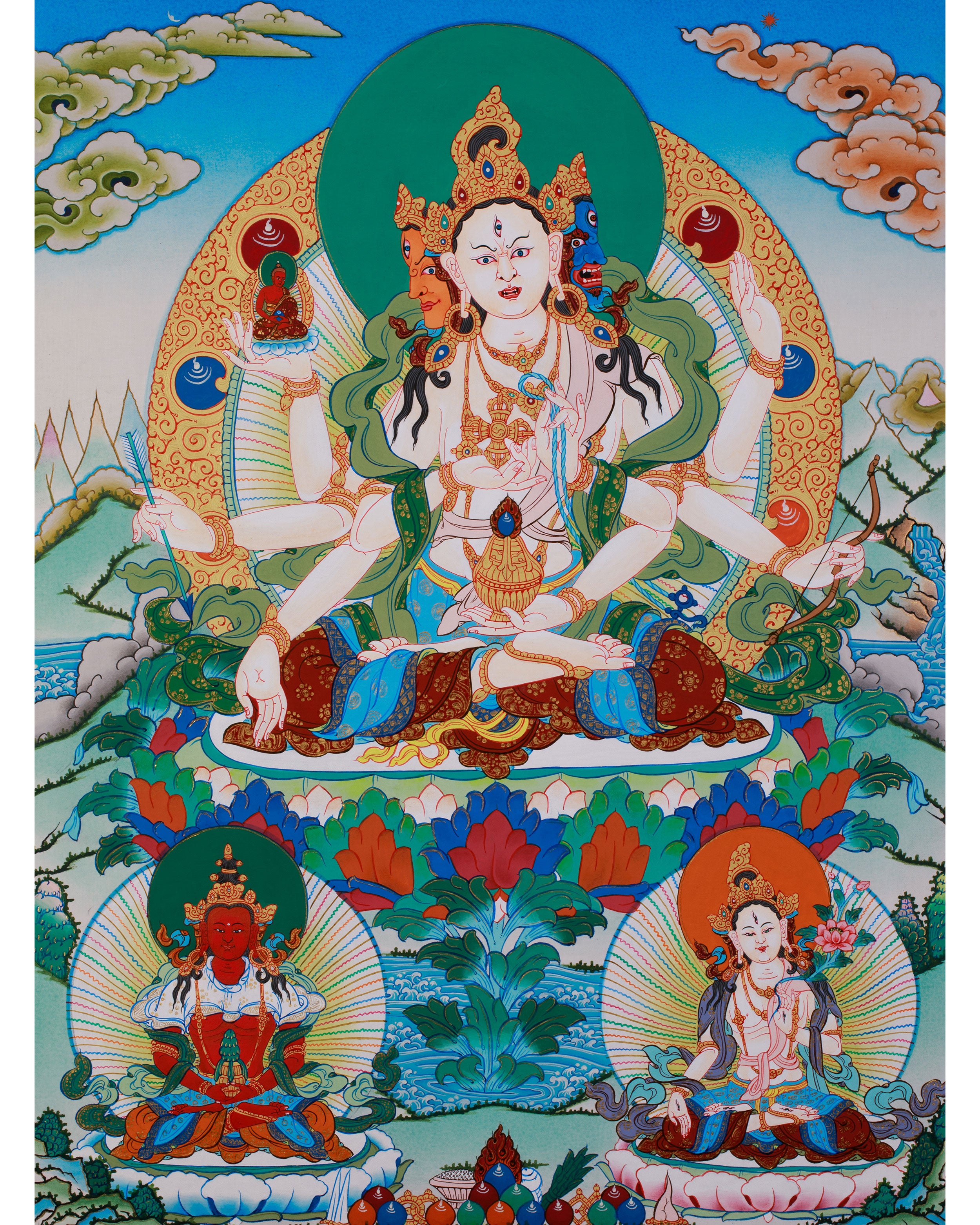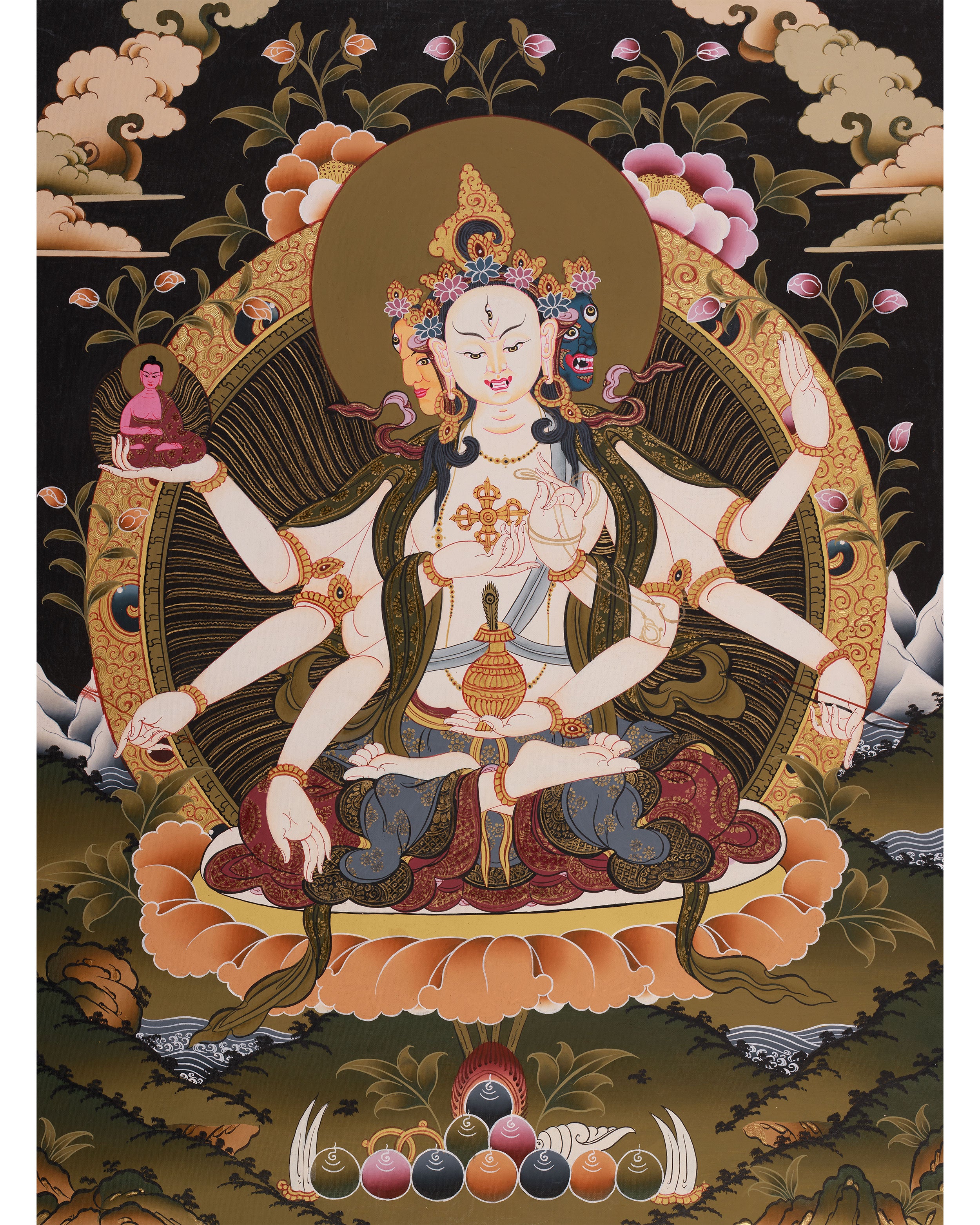Dakini Thangka
5 products
Showing 1 - 5 of 5 products
Dakini: The Living Embodiment of Enlightenment in Buddhism
The term "Dakini" originates from the Sanskrit word "dāk," signifying "sky" or "space," and translates to "sky-goer" or "sky-dancer." Dakinis is significant in Buddhist cosmology and symbolism, particularly within Vajrayana and Tibetan Buddhism. These beings encompass enlightened energy and are not merely symbolic representations but are genuinely revered as accessible entities.
Dakinis are often depicted as dynamic and transformative figures, playing a pivotal role in guiding practitioners through both inner and outer spiritual realms. They are seen as beings actively supporting and facilitating spiritual growth and transformation.
Attributes and Depictions
Dakinis, embodying the flow and metamorphosis of energy, are frequently portrayed as dynamic and engaged in dance. Depending on the context and the teachings they signify, they may assume wrathful or serene forms. Wrathful Dakinis, with their intense postures and the symbolism of destroying ego and ignorance, represent the transformation process.
In contrast, serene Dakinis represent the peaceful facets of enlightenment and the joy of realization. They may hold symbols like a skull cup, symbolizing the transformation of ego, or a drum, representing the rhythm of life and the heartbeat of emptiness. Their dances, often set against the backdrop of the sky or flames, symbolize the interplay of phenomena and the dance of emptiness.
Stories and Beliefs
Buddhist lore is replete with stories highlighting the roles and activities of Dakinis. For example, the renowned Tibetan yogi Milarepa encountered Dakinis during his meditative retreats. They tested his determination, imparted wisdom, and sometimes even provided sustenance.
Another story involves the interactions between the Indian master Naropa and the Dakini Niguma, who imparted profound teachings that laid the foundation for multiple Tibetan Buddhist lineages. Dakinis are believed to manifest as lessons, mentors, or catalysts for deeper understanding, whether in dreams, visions, or reality. In tantric traditions, Dakinis can serve as meditation deities for advanced practitioners, aiding them in inner yogas and intricate visualizations.
In essence, Dakinis serve as vital bridges in Buddhism, connecting the mundane and enlightened realms through their dynamic energy and profound insight. They challenge, inspire, and guide practitioners, ensuring their unwavering commitment to their path and their realization of boundless potential. Through their dance, they beckon all to join the cosmic rhythm of form and emptiness, guiding individuals toward enlightenment and liberation.










